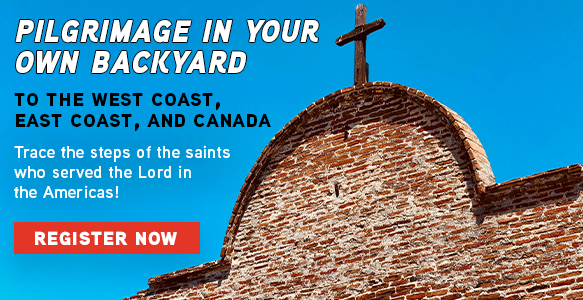
Over the years, each of the 50 states has selected two honorees to be memorialized in the U.S. Capitol building. Two of them are Catholic Saints and both were honored before they were even canonized for their contributions to their adopted states’ histories.
The first is St. Junipero Serra, formerly of Palma, Spain; a Franciscan priest who founded the first missions in what was then New Spain and is now California. Born on November 24, 1713, his feast is celebrated in much of the world on the anniversary of his death on August 28, 1784. However, in the United States, it is celebrated on July 1. He was canonized by Pope Francis in 2015. His statue was erected in the National Statuary Hall of the Capitol Building in 1931 on behalf of the state of California.
The second is one whom we celebrated earlier this week. St. Damien de Vuester represents the state of Hawaii. His statue was placed in the Hall of Columns in 1969. So, just how does a priest from Belgium – voted, in fact, as the “Greatest Belgian” in a 2005 nationwide vote in that country – end up representing the state of Hawaii in the United States Capitol building?
Joseph de Veuster was born in Belgium on January 3, 1840. At the age of 19, he entered the Congregation of the Sacred Hearts of Jesus and Mary and took the religious name of Damien. Three years later he was sent on mission to Hawaii, known at the time as the independent Kingdom of Hawaii.
A few months after his arrival, on May 21, 1864, he was ordained a priest in the Cathedral of Our Lady of Peace in Honolulu. While serving as a parish priest on the west side of the island of Hawaii, he began to see many of his parishioners sent off to the Kalaupapa peninsula on the island of Molokai after being diagnosed with leprosy.
The leper colony on Molokai was established in 1866 and anyone who contracted the disease was sent there until 1969, when treatment became widespread, and the quarantine was lifted. Father Damien’s heart was moved by the plight of the lepers and he asked to be sent to Molokai to minister to his former parishioners and the others who had been sent there.
While on Molokai, he helped establish numerous chapels, as well as homes for boys and girls who were sent to the island without their parents. He not only served the people spiritually through the sacraments, but also corporally by bandaging wounds, building coffins, and digging graves. Eleven years later, he himself contracted the disease, sharing his diagnosis with the others by using the phrase “We lepers…” in one of his homilies at Mass.
In 1889, after serving on Molokai for sixteen years, Father Damien passed away, from the same disease that plagued those whom he felt called to serve. He was chosen to represent Hawaii in the United States Capitol building in 1965, just six years after Hawaii became a state. Shortly thereafter, King Kamehameha was chosen as the second statue. A few weeks later, a second copy of the statue was unveiled outside the state capitol building in Honolulu. The statue of Fr. Damien depicts his leprosy scars and his arm hangs in a sling at his side – not hiding the cause of his death nor his life of service.
He was canonized on October 11, 2009, and his feast day is celebrated on May 10.




